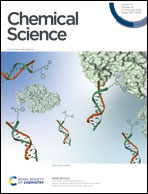In situ recrystallization of zero-dimensional hybrid metal halide glass-ceramics toward improved scintillation performance†
Abstract
Zero-dimensional (0D) hybrid metal halide (HMH) glasses are emerging luminescent materials and have gained attention due to their transparent character and ease of processing. However, the weakening of photoluminescence quantum efficiency from crystal to glass phases poses limitations for photonics applications. Here we develop high-performance glass-ceramic (G-C) scintillators via in situ recrystallization from 0D HMH glass counterparts composed of distinct organic cations and inorganic anions. The G-C scintillators maintain excellent transparency and exhibit nearly 10-fold higher light yields and lower detection limits than those of glassy phases. The general in situ recrystallization within the glass component by a facile heat treatment is analyzed via combined experimental elaboration and structural/spectral characterization. Our results on the development of G-Cs can initiate more exploration on the phase transformation engineering in 0D HMHs, and therefore make them highly promising for large-area scintillation screen applications.



 Please wait while we load your content...
Please wait while we load your content...